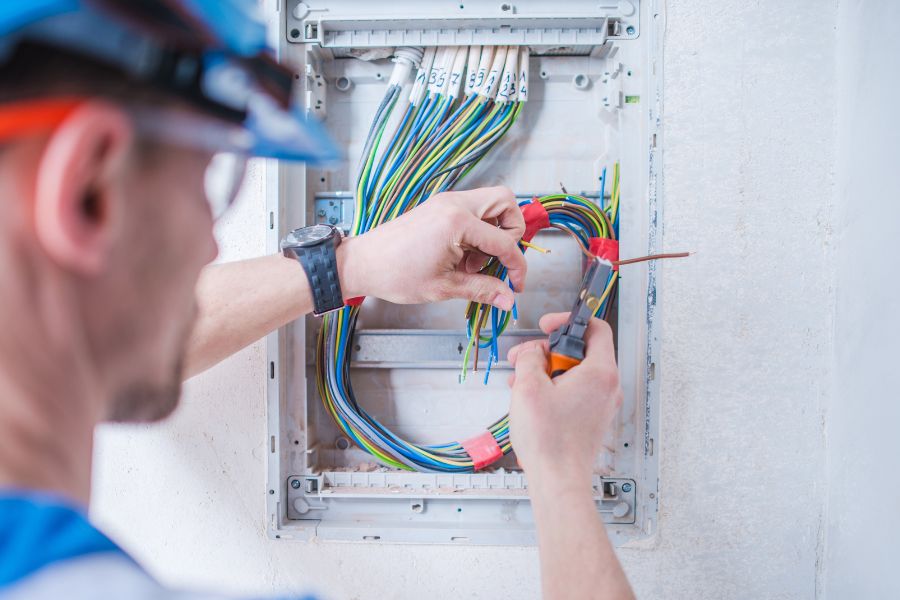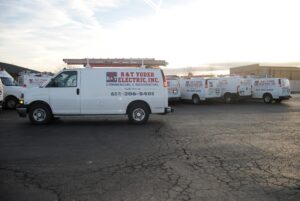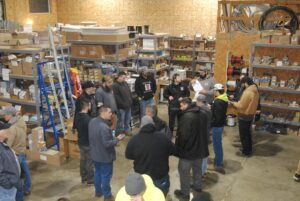
Hidden behind a metal door, usually in a basement or utility room, sits an unsung hero: the breaker box. This unassuming gray box orchestrates the complex electrical symphony that powers everything from your morning coffee machine to your evening Netflix binge. Without it, the lights wouldn’t turn on, the appliances wouldn’t run, and your Wi-Fi router would sit in silent despair.
A breaker box—also known as an electrical panel or distribution board—regulates, distributes, and protects your home’s electrical circuits. But like all essential systems, it requires periodic upgrades. Outdated or overloaded breaker boxes can cause power interruptions, damage expensive appliances, and even spark electrical fires. Understanding the significance of breaker box installation, when it’s time for an upgrade, and the process involved will empower you to make informed decisions for your home’s electrical safety and efficiency.
Why Breaker Box Installation Matters
Breaker boxes aren’t just functional; they’re fundamental. Without a properly installed and maintained box, your home’s electrical system becomes a minefield of potential hazards.
Key Reasons to Prioritize Installation or Replacement:
- Safety First:
Electrical fires cause thousands of home disasters annually. Modern breaker boxes use circuit breakers instead of outdated fuses, reducing the risk of overloads and short circuits. - Enhanced Electrical Capacity:
Older panels struggle with modern appliances like HVAC systems, EV chargers, and high-wattage kitchen gadgets. Upgrading ensures your home can handle increased power demands without tripping circuits. - Code Compliance:
Electrical codes evolve to address new safety standards. Upgrading ensures compliance with the National Electrical Code (NEC) and local regulations, particularly if you’re renovating or selling your home. - Improved Efficiency:
A well-installed breaker box optimizes power distribution, minimizing wasted energy and enhancing overall system performance. - Future-Proofing:
Planning to install solar panels, a home theater system, or a hot tub? An upgraded breaker box lays the groundwork for these high-demand installations.
Signs You Need a New Breaker Box
Breaker boxes rarely announce their impending demise with fanfare. Instead, they exhibit subtle, often ignored symptoms until a full-blown failure occurs. Watch for these warning signs:
1. Frequent Circuit Breaker Trips
Circuit breakers trip to prevent overheating or short circuits. Occasional tripping is normal; persistent tripping signals a deeper issue.
Likely Causes:
- Overloaded circuits
- Aging or damaged wiring
- Inadequate panel capacity
2. Burning Smell or Scorch Marks
Electrical burning odors are never benign. If you detect a burnt plastic or metallic smell near your breaker box, it’s a red flag. Scorch marks indicate overheating, which can lead to fires.
Immediate Action: Shut off power and call a licensed electrician immediately.
3. Outdated Panel Model
Homes built before the 1990s often use panels with limited capacity, incompatible with modern power demands. FPE (Federal Pacific Electric) and Zinsco panels, notorious for malfunctioning breakers, should be replaced without delay.
4. Flickering or Dimming Lights
Lights that flicker when you run a hairdryer or microwave indicate panel overload. The system struggles to distribute power evenly.
5. Hot Breaker Box Surface
A warm panel suggests overloaded circuits or failing breakers. Excess heat accelerates component wear and increases fire risk.
The Breaker Box Installation Process: Step-by-Step
Breaker box installation is a meticulous process that demands precision, expertise, and adherence to stringent safety standards. Here’s a behind-the-scenes look at how professionals handle the task:
1. Pre-Installation Assessment
- Evaluate the existing electrical infrastructure.
- Calculate the required amperage based on current and anticipated power needs.
- Obtain necessary permits to comply with local codes.
Insight: The average modern home requires at least a 200-amp panel to accommodate high-demand devices like EV chargers and home offices.
2. Power Shutdown
- Turn off the main power supply to eliminate electrical hazards.
- Test circuits to confirm zero current flow.
3. Removal of the Old Panel
- Disconnect and label existing wires.
- Carefully detach and remove the outdated breaker box.
4. Installation of the New Panel
- Mount the new box securely to a wall.
- Connect wires to corresponding breakers, adhering to color-coding standards.
- Install the main breaker and individual circuit breakers.
Pro Tip: Use AFCI (Arc-Fault Circuit Interrupter) breakers in bedrooms and GFCI (Ground-Fault Circuit Interrupter) breakers in moisture-prone areas like kitchens and bathrooms.
5. Testing and Inspection
- Re-energize the system.
- Test each circuit for proper functionality and stability.
- Schedule a municipal inspection to verify code compliance.
Types of Breaker Boxes: Know Your Options
Breaker boxes come in various configurations, each tailored to specific applications.
1. Main Breaker Panel
The home’s primary electrical control center. Includes a main switch that can cut power to the entire property.
Ideal For: Standard residential installations.
2. Sub-Panel
A supplementary panel that extends electrical capacity to garages, workshops, or new home additions.
Ideal For: Homes undergoing expansion.
3. Solar-Ready Panel
Panels designed to integrate seamlessly with solar power systems.
Ideal For: Eco-conscious homeowners investing in renewable energy.
4. Smart Electrical Panel
Equipped with energy monitoring capabilities, remote access, and predictive maintenance alerts.
Ideal For: Tech-savvy households optimizing energy consumption.
Interesting Fact: Smart panels can track individual appliance usage, helping you identify energy hogs.
The Role of Breaker Boxes in Energy Efficiency
Energy efficiency isn’t solely about using LED bulbs and Energy Star appliances. It starts at the panel level.
How Modern Breaker Boxes Contribute:
- Efficient Load Management: Balances electrical loads to reduce strain on circuits.
- Integration with Renewable Energy: Enables solar panel connections.
- Compatibility with Smart Home Systems: Supports automated energy-saving routines.
Did You Know? An overloaded panel can lead to phantom loads—power consumed by devices even when turned off.
Breaker Box Installation for New Homes vs. Upgrades
New Home Installations:
- Requires load calculations based on projected appliance usage.
- Involves installation from scratch, including wiring infrastructure.
Upgrades and Replacements:
- Often require panel replacements due to outdated or damaged components.
- May involve rewiring or adding circuits to accommodate new appliances.
Example: Adding an electric vehicle (EV) charging station typically necessitates a panel upgrade.
Common Breaker Box Installation Mistakes to Avoid
Even minor errors during installation can lead to significant hazards.
1. Incorrect Wire Sizing:
Using undersized wires can cause overheating and eventual failure.
2. Overcrowded Panels:
Cramming too many circuits into a single panel reduces efficiency and increases fire risks.
3. Poor Labeling:
Unlabeled circuits cause confusion during maintenance or emergencies.
4. Skipping Permits:
Unpermitted installations might fail inspections, delay home sales, or invalidate insurance claims.
Maintenance Tips for Long-Term Breaker Box Performance
Like a well-oiled machine, your breaker box requires occasional maintenance to remain reliable.
- Inspect Annually: Look for scorch marks, rust, or loose connections.
- Test Breakers: Manually trip breakers once a year to ensure proper functionality.
- Monitor Energy Loads: Stay aware of new appliances that might overload existing circuits.
- Hire Professionals: Schedule professional inspections every 3-5 years.
FAQ Section
1. How long does breaker box installation take?
Most installations take 4-8 hours, depending on complexity and wiring requirements.
2. What size breaker box does my home need?
Most modern homes need 200-amp panels. Larger homes or those with high-demand appliances may require 400 amps.
3. Can I install a breaker box myself?
It’s strongly discouraged. Breaker box installation involves complex wiring and strict code requirements. Mistakes can cause fires, electrocution, or equipment damage.
4. How do I know if my breaker box is overloaded?
Frequent breaker trips, dimming lights, or humming noises often signal overloads.
5. When should I replace my breaker box?
Breaker boxes generally last 25-40 years. Upgrade sooner if you experience performance issues, add power-hungry devices, or own a model known for malfunctions.
Your home’s breaker box is the gatekeeper of electrical safety and performance. An outdated or malfunctioning panel jeopardizes your appliances, your home’s efficiency, and, most importantly, your family’s well-being.
Don’t let an aging panel dim your lights or endanger your property. Our expert breaker box installation services ensure your home’s electrical system is up-to-date, efficient, and safe. Whether you’re building a new home, adding an EV charger, or upgrading outdated infrastructure, we’ve got you covered.







